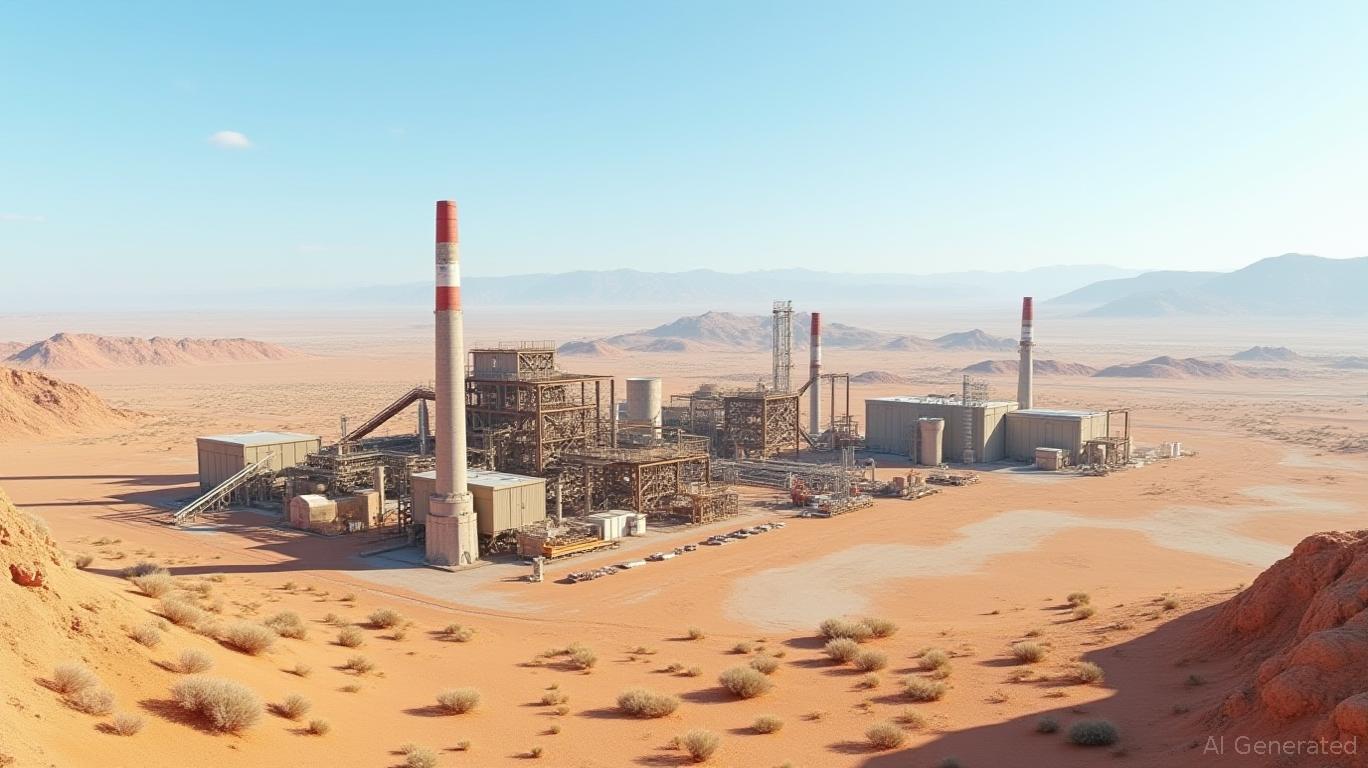Anson Resources' Green River Lithium Project: A Strategic Pillar in U.S. Critical Minerals Autonomy
The global race to secure lithium supply chains has intensified as electric vehicle (EV) adoption surges. Amid this backdrop, Anson Resources' Green River Lithium Project in Utah has emerged as a compelling opportunity to reduce U.S. reliance on foreign lithium imports. Combining advanced geological modeling, brownfield development efficiencies, and alignment with federal critical minerals policies, the project is poised to become a cornerstone of domestic lithium production. Here's why investors should take notice.

Validating the Brine Reservoir: Static and Dynamic Petrel Models Unlock Value
The completion of Anson's Static and Dynamic Petrel Models marks a critical milestone. These models have confirmed the existence of a large, interconnected brine reservoir across the Green River Project area, with over 42 aquifers identified in the Mississippian Unit. This geological insight is foundational to refining the JORC (Joint Ore Reserves Committee) Mineral Resource Estimate, currently at 24% of the total project area. The Mt Fuel-Skyline Geyser well, once re-entered, could expand this estimate significantly.
The project's Exploration Target of 2.0–2.6 billion tons of brine grading 100–150 ppm Li underscores its scale. While this remains conceptual, the geological continuity with Anson's proven Paradox Project—where similar Mississippian limestone formations demonstrated high permeability—bolsters confidence in the reservoir's viability.
Regulatory Tailwinds and Operational Efficiency: A Winning Combination
U.S. policymakers are prioritizing domestic critical minerals production to reduce reliance on China and South America. Anson is well-positioned to capitalize on this shift. The re-entry of the Mt Fuel-Skyline Geyser well—an existing oil well—leverages brownfield development, minimizing land disturbance and regulatory hurdles. This approach aligns with the Biden administration's National Critical Minerals Strategy, which fast-tracks permits for such projects.
The project's Direct Lithium Extraction (DLE) pilot program, achieving a 98% lithium recovery rate, further reduces operational costs and environmental impact. Unlike traditional lithium brine evaporation ponds, DLE's scalability and efficiency are game-changers in arid regions like Utah.
Strategic Location and Synergies with EV Supply Chains
The Green River Project's placement in Utah offers unparalleled logistical advantages. Proximity to Interstate 70, rail networks, and power infrastructure minimizes transport costs. Additionally, the region's existing water rights and sub-lease agreements ensure a reliable supply for production.
Equally critical is the project's geographic synergy with EV supply chains. Major U.S. EV manufacturers, including Tesla and Ford, are expanding operations in the Southwest. Anson's ability to deliver lithium domestically could position it as a preferred supplier, reducing supply chain bottlenecks.
Investment Catalysts and Risk Considerations
The completion of the maiden JORC estimate and the re-entry of the Mt Fuel-Skyline Geyser well are near-term catalysts. Analysts have already upgraded Anson to a "Buy" with a target price of A$0.15, reflecting its potential to contribute to U.S. lithium autonomy. However, investors should monitor technical sentiment, which currently signals a "Sell" due to short-term volatility in junior mining equities.
Long-term risks include permitting delays or lithium price fluctuations. Yet, Anson's focus on low-cost brownfield development and DLE technology mitigates these risks. The project's market cap of A$69.34M remains modest relative to its resource potential, suggesting upside as drilling progresses.
Conclusion: A Lithium Play with Multiplier Effects
Anson Resources' Green River Project exemplifies the confluence of strategic geology, regulatory support, and operational innovation. By repurposing existing infrastructure, employing proven DLE technology, and aligning with U.S. critical minerals goals, the project addresses two critical needs: energy transition demand and supply chain resilience.
For investors seeking exposure to the lithium boom without the volatility of larger players, Anson presents a compelling risk-reward profile. While near-term technical headwinds exist, the project's alignment with U.S. policy and its scalable resource base position it as a high-conviction long-term play. Stay tuned for drilling updates—these could catalyze a re-rating of the stock.
Investment thesis: Buy Anson Resources with a 12–18 month horizon, targeting JORC expansion and partnership announcements.

Comments
No comments yet